ANALYSIS
Numsa’s indefinite strike will bring South Africa’s beleaguered steel industry to its knees
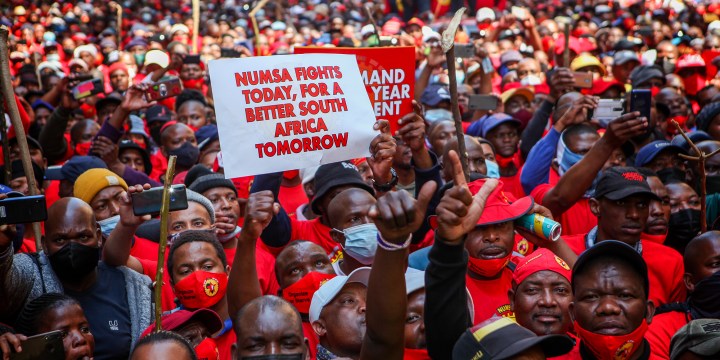
Workers in the steel and engineering sectors have embarked on an indefinite strike over a long-standing dispute on salary increases in 2021. The strike might be like the one in 2014, which lasted four weeks and cost South Africa’s economy R6-billion.
Shop floors at steel factories across SA were abandoned on Tuesday after workers downed tools and embarked on an indefinite strike across the country that is set to bring an important component of the economy to its knees.
Workers affiliated with the National Union of Metalworkers of SA (Numsa) in the steel and engineering industry went on strike over a long-standing dispute on salary increases in 2021.
The strike, which involved some of Numsa’s 432,000 workers, is reminiscent of the one in 2014 that lasted for four weeks and cost the steel and engineering sector between R300-million and R500-million per day, or R6-billion for the broader economy.
News of the strike sent the share price of ArcelorMittal SA, one of the country’s big steelmakers, nearly 1% lower on Tuesday, wiping off R68-million from its value on the JSE.
The steel and engineering industry is an important component of SA’s economy: it represents nearly 2% of the country’s economic output and is responsible for 190,000 direct jobs.
The industry is battling to survive an environment in which steel prices are depressed because of cheap imports from China. Steel demand is also in the doldrums as big construction and infrastructure projects have dried up since the 2010 Fifa World Cup.
On the first day of their strike on Tuesday, workers affiliated with Numsa marched to the Metal and Engineering Industry Bargaining Council in Johannesburg and handed over a memorandum reiterating their demand for inflation-beating salary increases. The council is where workers and employers in the steel and engineering industry negotiate the terms of employment.
Marches also took place in the Northern Cape, KwaZulu-Natal and the Western Cape.
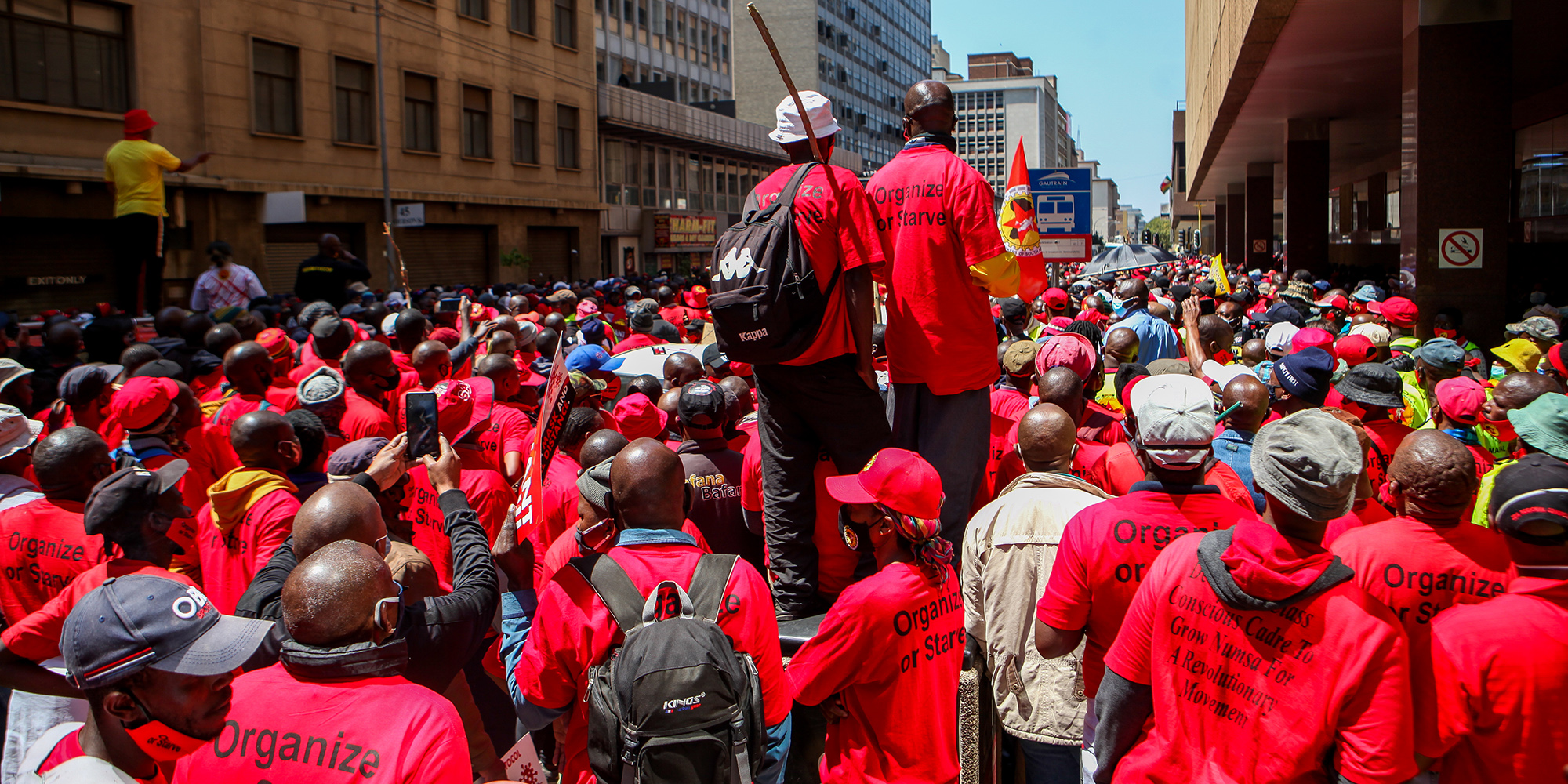
The National Union of Metalworkers of South Africa called on all engineering workers across the country to down tools and fight for a living wage on 5 October 2021 in Johannesburg, South Africa. (Photo: Gallo Images / Sharon Seretlo)
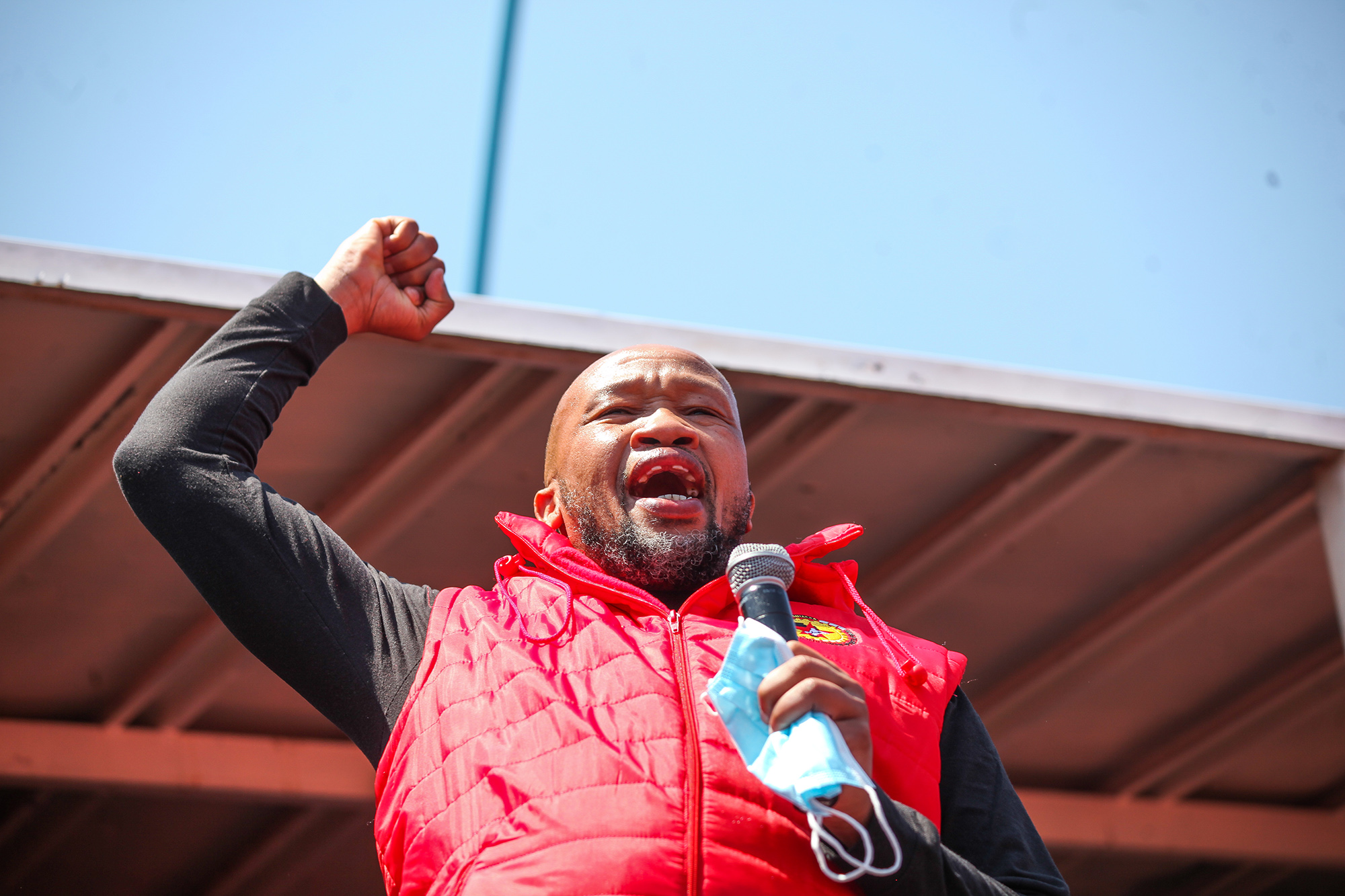
The National Union of Metalworkers of South Africa general secretary Irvin Jim called on all engineering workers across the country to down tools and fight for a living wage. (Photo: Gallo Images / Sharon Seretlo)
Trade union demands
Numsa has demanded a salary increase of 8% for one year (2021), then an adjustment of consumer inflation plus 2% for the following two years. This works out to salary increases of just over 6%, as the SA Reserve Bank expects inflation to average 4.2% and 4.5% in 2022 and 2023, respectively.
But employers are not entertaining Numsa’s salary adjustment demands, as they have tabled a 4.4% increase for 2021, an inflation plus 0.5% increase in 2022, and inflation plus 1% increase in 2023. Using the SA Reserve Bank’s inflation forecast, the offer of employers works out to salary increases of about 4.7% in 2022 and 5.5% in 2023.
Numsa and employers in the steel industry, represented by the Steel and Engineering Industries Federation of SA (Seifsa), have failed to find each other and Numsa has declared a salary dispute.
The memorandum handed to the bargaining council stated that Numsa was “declaring war” on an “opportunistic agenda” by employers to plunge already embattled workers into a “slavery national minimum wage”.
“They adopted an opportunistic stance, refusing to make a meaningful offer that can resolve this round of negotiations. This is the reason that Numsa resolved to serve all employer associations with a notice for an indefinite strike, which begins today, 5 October 2021,” read the memorandum.
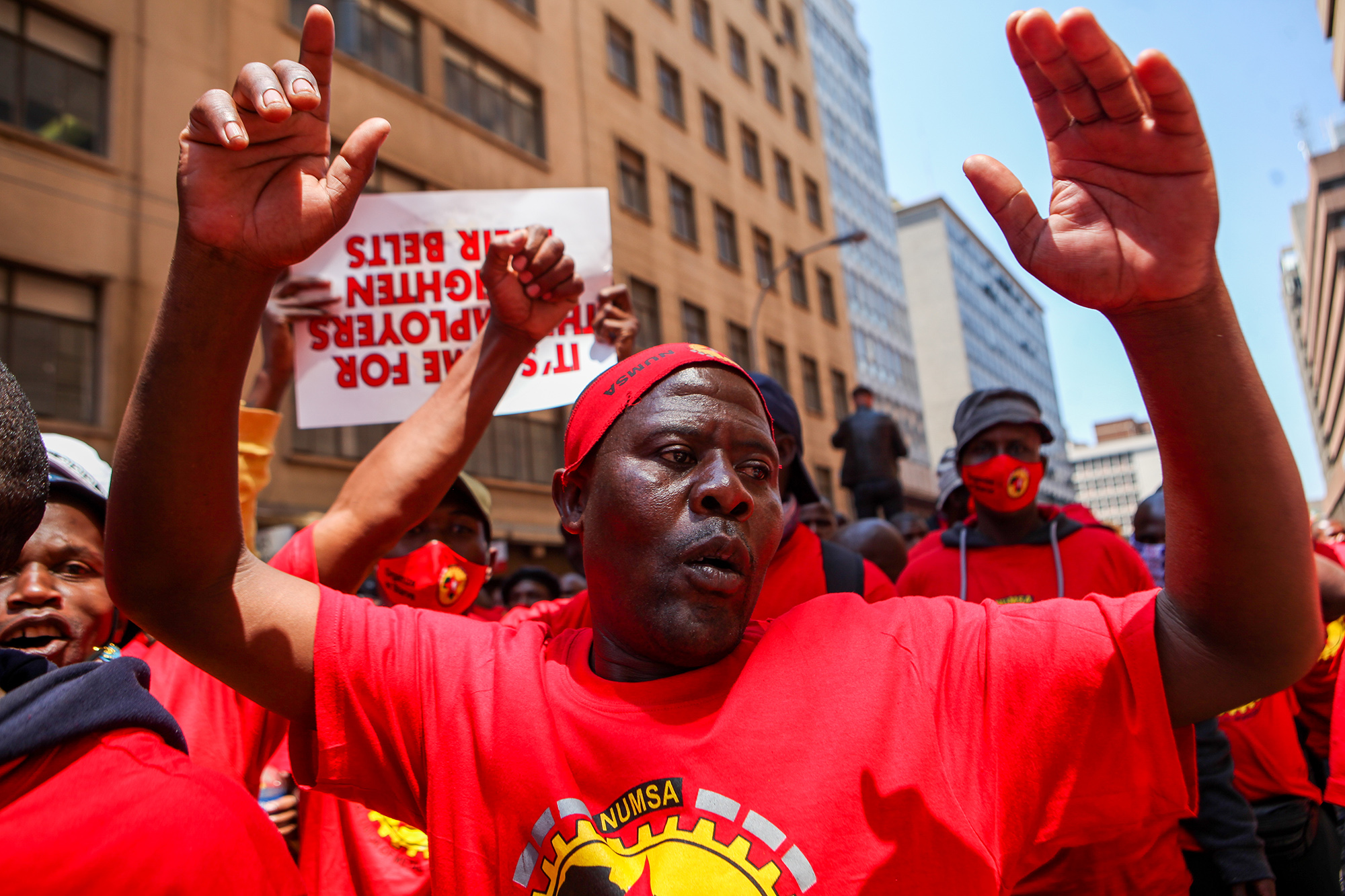
National Union of Metalworkers of South Africa members on strike on 5 October 2021. (Photo: Gallo Images / Sharon Seretlo)
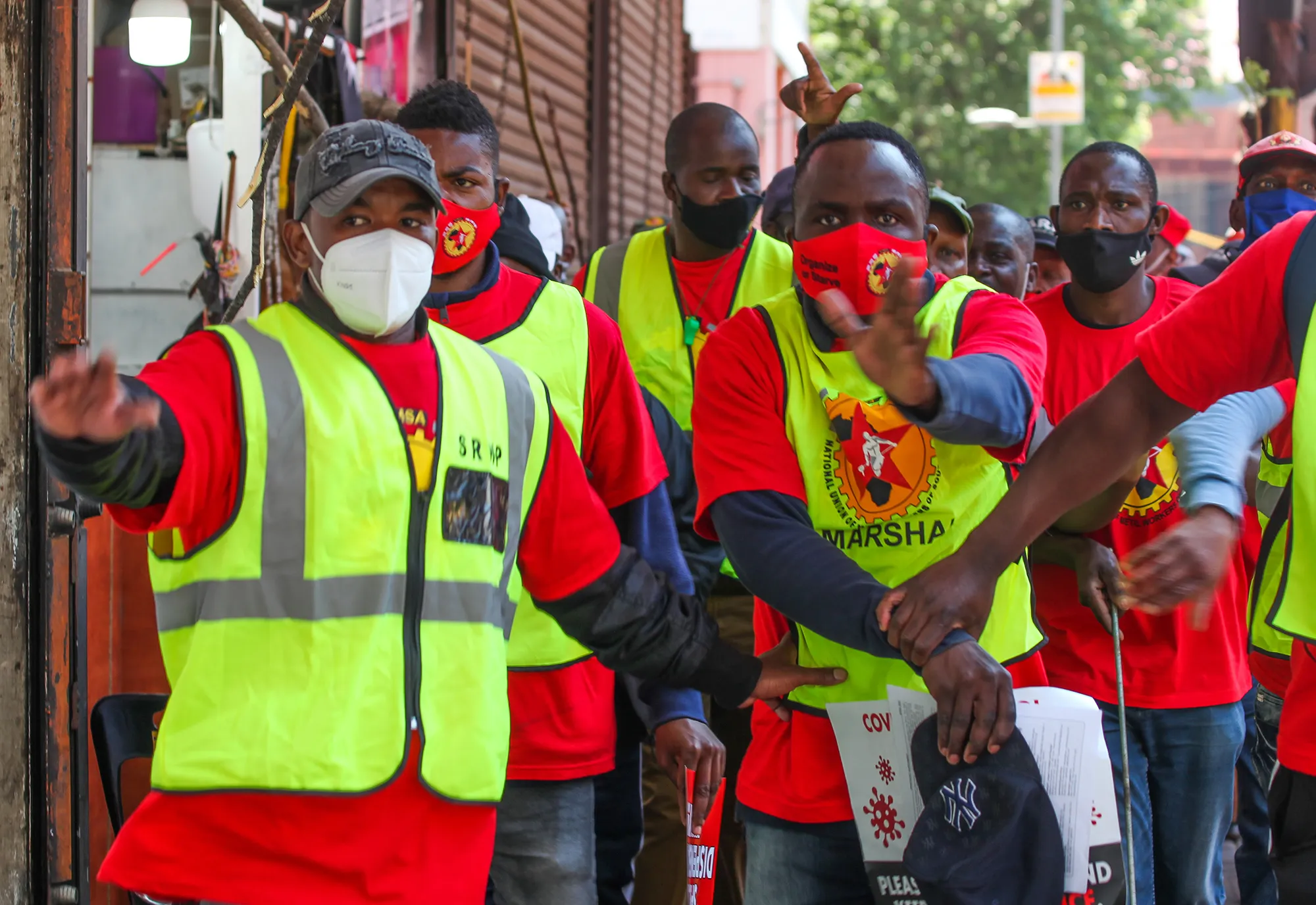
National Union of Metalworkers of South Africa members during the 5 October 2021 strike for a living wage. (Photo: Gallo Images / Sharon Seretlo)
Employer representative responds
Lucio Trentini, CEO of Seifsa, the sector’s largest employer body, which represents 18 organisations employing 170,000 workers, believes that it can bring Numsa back to the negotiating table to avoid a prolonged strike. Other smaller employer bodies include the National Employers’ Association of South Africa, SA Engineers and Founders Association and Consolidated Employers’ Organisation.
Trentini told Business Maverick: “The sooner we get back to the negotiating table, the better. We don’t want the strike to last four weeks, hence the urgency to get back to the negotiating table. The economy is not in the same place as in 2014. It is important for us to conclude a salary increase deal.”
Trentini was sympathetic to the plight of workers as they had to forgo salary increases in 2020 because of the Covid-19 pandemic, which brought the steel industry to a halt during the hard lockdown. But he said workers needed to moderate their expectations as the steel industry is still in the doldrums.
Trentini said that unlike in 2014, employers in the steel industry are prepared for this strike as they have stocked raw materials to continue producing and supplying steel for the automotive, mining and construction industries. DM/BM
















 Become an Insider
Become an Insider
It’s unlikely that Seifsa will move beyond 5%. A strike of 4 weeks without pay will result is a net loss over the first year.
To be demanding an 8% increase in an industry that is struggling to survive makes no sense.
When did sense ever come into it
You have seen this movie before, week one no movement
Week two workers get frustrated and violent as they have not been paid
Week three it gets settled at around 5% with inflation + next two years
Workers never recover the wages they have lost
Employers go away and plan to reduce labour force
Union leaders proclaim victory, they are paid anyway during the strike
The strikers all appear to have new T-shirts, vests, masks and caps – I wonder who paid for those?
A strike until 1 November? Now there is another co incidence!
One positive thing this strike might do is drive up the steel price based on supply and demand!
These workers are being used by a certain someone with political aspirations….we all know who that is!
The large employers will have prepared for a protracted strike by stocking raw materials and using management resources to run operations with skeleton staff. The strike will end with workers being worse off than if they settled close to the offer tabled by employers and large employers will end close to break even, if not in the black due to massive savings on wages with limited impact on production volumes. I witnessed the 2014 strike from close quarters. It was ugly. I hope the parties find each other quickly this time around.
The majority of employers, who are mainly represented by NEASA unfortunately do not have the luxury of almost unlimited resources and funds like the large employers. Their business concerns will suffer and lots of jobs will be lost. The steel industry’s minimum wage is almost double that of it’s nearest ‘rival’. How on earth can manufacturing grow under these circumstances?
Irvin Jim reminds me of Red Robbo in the UK, parked his Jaguar a couple of blocks from the union meetings and drove up in a Morris Minor or similar humble little car 🙂
The poster reads “NUMSA fights today, for a better South Africa tomorrow”. A more accurate poster would read “NUMSA fights today, for joblessness tomorrow and Chinese steel everywhere”.
The bottom line is that this Will achieve a little more money for these workers, but thousands of jobs will be shed as the economy shrinks further. Then the unions, ANC and SACP will blame “the capitalists” for investing their money where labour is more competitive.
The unions are their own worst enemy and they will disappear much as is happening elsewhere in the world.
Irvin Jim is a fool. A basic understanding of business would make him realise that he is simply guaranteeing a further deindustrialization of South Africa. The fact is, that by the time there is no industry left to speak of, he would have had his slice of the diminishing cake and who cares about the workers!! He should rather push for a bonus formula for workers,once long term returns breach an acceptable level.
This nonsense won’t stop until the unions have to pay the salaries of striking workers.
There is quite correctly an entrenched right to strike in South Africa. This is in line with most other democracies the world over. What however is missing is the right not to strike. Unions use violence and intimidation to force employees who have no desire to strike into staying away from work. It is this which renders the Labour Relations Act functionally unconstitutional. How can reasonable and responsible employers compete against unions who threaten to kill and maim those who oppose them?
The purpose of government is to act as a referee in these circumstances and to ensure that the law is adhered to. Unfortunately they have consistently demonstrated their inability to even understand the impact of their negligence. Take a moment to read the memorandum released by Numsa. It contains threats, racist statements and declarations of war. Why has the Dept of Labour not acted? Are they simply incompetent or are they in support of the destruction of economic activity in and employment in South Africa?
The South Africa steel and engineering industry is already on its knees. The strike is set to deliver a kick to the head. Companies are battling to survive and jobs are being lost. This is not the answer South Africa needs to rebuild its shattered economy.